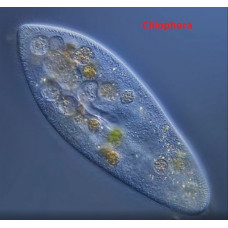Zoobenthos - animals living in water bodies on the surface of the bottom and in the thickness of the ground. Worms, mollusks, crustaceans, numerous larval forms of aquatic insects and many others are known in zoobenthos.
Bottom fauna, animal benthos, totality of animal organisms living on the bottom or in the ground of water bodies. In terms of size, nanobenthos, micro-, meso-, meio- and macrobenthos are distinguished.
The meiobenthos (e.g., small oligochaetes, ostracods, harpacticids, fish eggs, juvenile mollusks, etc.) includes forms 0.1 - 2 mm in size, the macrobenthos includes larger forms (insect larvae, mollusks, oligochaetes, polychaetes, echinoderms, higher crustaceans, etc.), the microbenthos includes forms 0.1 - 2 mm in size. ), to microbenthos - of smaller size (protozoa - especially infusoria, small nematodes, mites, lower crustaceans, embryos of some hydrobionts, etc.).
A distinction is made between eusomicrobenthos (nanobenthos) - organisms with a maximum adult size of 0.1 mm (some infusoria) and pseudomicrozoobenthos - organisms up to 0.1 mm in size only at early stages of development (some infusoria, ostracods, the first stages of development of harpacticids, etc.).
According to the same principle, mesozoobenthos is divided into eumesozoobenthos and pseudomesozoobenthos.
Adaptation of animals to the benthic way of life is reduced, first of all, to the development of means of retention on solid substrate, protection from burial by settled suspended matter, to the development of the most effective ways of locomotion.
Adaptations to temporary transition to planktonic or non-planktonic way of life (nektobenthos) are extremely characteristic for zoobenthos organisms, which provides sedentary forms with the possibility of significant movements in the interests of settlement or change of habitats.
Zoobenthos
Tags: zoobenthos



